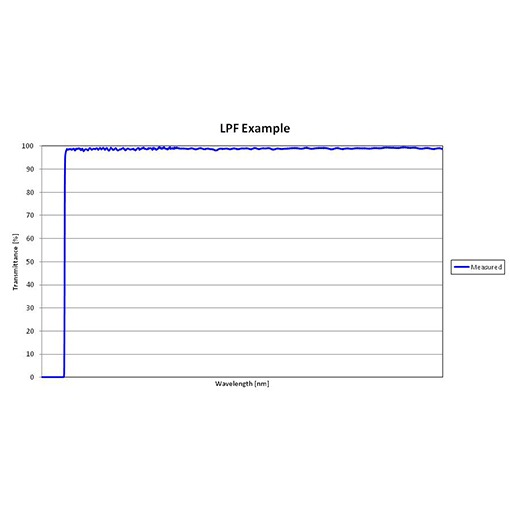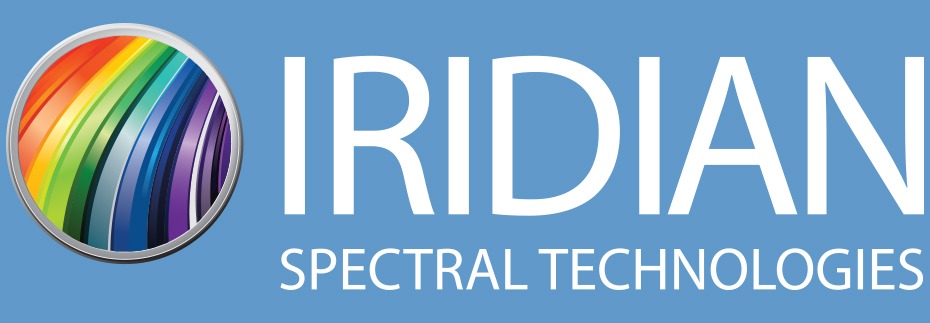Long pass filters, sometimes referred to as long pass edge filters, are designed to transmit wavelengths within a given wavelength range. This band is defined by the filter’s cut-on edge which essentially blocks frequencies shorter than the specified edge wavelength. Long pass filters typically have a steep cut-on with close to zero transmission for the blocked range and as close to 100% as possible for their given passband.
How Long Pass Filters Work
Edge filters are used to isolate one band of wavelengths from another by selectively transmitting light above/below the edge wavelength. The effectiveness of a long pass filter is determined partly by its optical density (OD), which is a measure of light blocking ability considering all forms of attenuation. It is also determined by the edge steepness, which defines the spectral width between two points on the slope; a smaller edge steepness corresponding to a sharper transition between rejection and transmission.
 In the context of Raman spectroscopy—where edge filters are used to separate excitation source from Raman scattered light at lower energies—the cut-on of a long pass filter is defined as the spectral width between the laser line wavelength and the wavelength corresponding to 50% transmittance. Meanwhile, the OD blocking at the laser line wavelength defines the lowest required blocking. Long pass filters with smaller cut-on edges are often desirable as they offer much sharper transitions. They also offer access to much more of the fingerprint region of the Raman scattered spectrum—though this may come at additional cost and will require more careful consideration of optics builds.
In the context of Raman spectroscopy—where edge filters are used to separate excitation source from Raman scattered light at lower energies—the cut-on of a long pass filter is defined as the spectral width between the laser line wavelength and the wavelength corresponding to 50% transmittance. Meanwhile, the OD blocking at the laser line wavelength defines the lowest required blocking. Long pass filters with smaller cut-on edges are often desirable as they offer much sharper transitions. They also offer access to much more of the fingerprint region of the Raman scattered spectrum—though this may come at additional cost and will require more careful consideration of optics builds.
Applications of Long Edge Filters
Long pass filters are used in a variety of applications other than Raman spectroscopy. They are commonly used as band separators in precision spectroscopy, and are useful as blocking/sorting filters in various photometric instruments, helping to eliminate optical distortions. Owing to their implicit longer wavelength-dependent transmittance, long pass filters are also ideal for eliminating leakage of excitation light in fluorometry and maximising the acquisition of sample fluorescence.
Although long pass filters can be used independently, they can also be combined with short pass filters aligned to filter the same light source. This allows for sharp out-of-band rejection of both short and long wavelengths, enabling a much more precise filtering assembly.
Long Pass Filter Specifications
At Iridian, we supply long pass filters for Raman spectroscopy which are known for their ultra-steep cut-on. We also provide lower steepness cut-on filters for applications that do not require steep cut-on. Our Nano Edge long pass filters have the steepest edge on the market (<26 cm-1 for 785 nm), corresponding to 0.2% of the laser wavelength and providing unprecedent access to low frequency Raman signals. Integrating our Nano Edge long pass filters demands careful attention to optical design and overall system performance. Read our application note on Edge Filters for Raman Spectroscopy for more details. Or refer to our long pass filters product page for full specifications.
